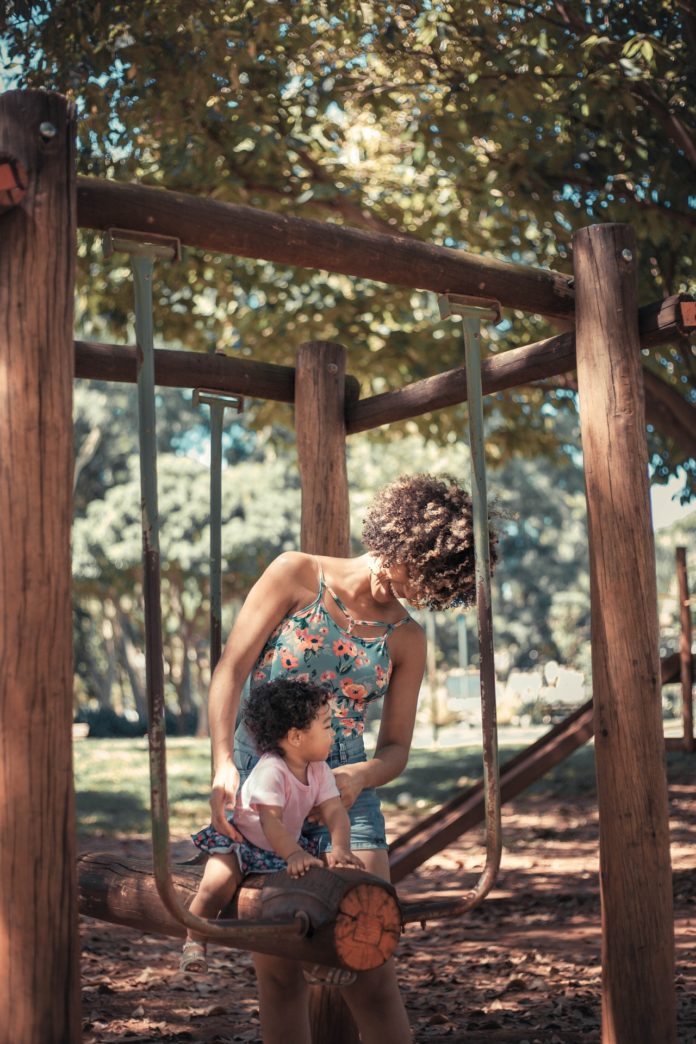The majority of parents are aware that allowing their children to spend time in nature is perfectly healthy for their well-being. Did you guys know that being in nature can also contribute to the better health of babies?
The outdoors is full of interesting sensations that your child may absorb and use to help them perceive the world. While taking your infant outside for the very first time can be nerve-wracking, it will be far less stressful if you and your baby are prepared.
Here are some crucial safety recommendations to make your future outdoor journey with your child a memorable one.
1. Sun Protection for Your Child
It’s essential to safeguard your baby’s fragile skin from the sun’s harmful ultraviolet (UV) rays when taking them outdoors. It’s not just the warmer months to be on the lookout for. Because UV rays can pass through clouds and bounce off snow, sun protection is very important all year.
Kids there under the age of six months, according to a sources from the Food and Drug Administration (FDA), should always be kept out of strong sunlight in all circumstances. Often use a broad-spectrum sunscreen with only an SPF of 30 or higher for babies more than six months, and repeat every two hours. It is really a wise idea to dress your child in light clothing and caps with brims to protect them from the sun’s rays.
2. Dress Your Baby in Weather-Resistant Clothes
Before you go, check the weather forecast and make sure your baby is dressed comfortably and appropriately for the weather. During the summer, soft fabric clothing will keep your young one fresh and comfy. Cover your baby in fabrics that will drain away moisture in the chill.
Fleece, silk, and wool are all good choices for keeping your baby warm. Remember to wear a baby cap to keep your head warm! Make sure your infant isn’t overly hot or cold by checking on them on a frequent basis.
3. Start Small
For your baby’s inaugural outdoor trip, you don’t have to go on a 5-mile hike. Stay in a park nearby or a safe location with cell coverage. If you’re unfamiliar with the area, do some research ahead of time and discover exactly where all of the toilets are in case your child needs a diaper change.
Talk to your infant about anything you see and hear as you go around. Make a point of pointing out items to them to encourage their appreciation of the outdoors. This is an excellent opportunity to expand their vocabulary while also teaching children about environmental stewardship.
4. Know How to Make the Most of Your Baby Equipment
If you’ve recently purchased a jogging stroller, pram, or strollers for newborns, familiarize yourself with how to use them before heading out on the trail. The very last thing you need to do is travel 45 minutes to the park, arrive, and discover that you need help tightening the back of your carrier—or, worse, discover the valuable lesson that you have the inappropriate carrier size for your infant.
Take a test run with your gear to ensure that you and your baby would both be relaxed and confident. Even though your baby is walking, it’s a good idea to bring your stroller. It’s useful to have on hand in case your child becomes fatigued. If you buy the right product, it will be just like the best safe in the world for them at the tiring time.
5. Having A Baby First-Aid Kit On Hand Is A Good Idea
That’s fantastic when you already had the first kit for the outside. Is it, however, packed with baby-friendly items? While many things may be used for newborns and children of all ages, your first-aid kit might include a handful of baby-specific medications.
Infant acetaminophen, a nasal aspirator bulb, Mylicon (for baby gas relief), a baby antibiotic cream, a rectal thermometer, and baby-safe bug repellent are examples of these items.
While you’re there, stock up on baby wipes. They constantly appear to be useful in some way. If your infant is below the age of three months, see your doctor before administering any medications to him or her.
6. Keep A Close Eye Out For Plants And Animals That Are Poisonous
Allowing your baby to touch and engage with natural textures is a fascinating way for them to learn about the world around them. You even allow them to do so at home, but when it comes to touching the wrong stuff, you inhibit strictly. Definitely you won’t let your toddler play with the highest quality ceramic rings filter media while exploring the fish aquarium.
Touching the incorrect things (poison ivy, snakes, and stinging insects, for example) might teach your child a terrible lesson.
Strive to know about the poisonous plants and animals in your area to protect your child against being bitten or stung. Realizing how to recognize natural hazards will assist you in keeping your baby safe and content.
7. Stay Vigilant
When your infant is outside, it goes without saying that they must be closely supervised at all times. They won’t be harmed by a little dirt, but there are lots of harmful living organisms that will.
Allowing your child to go wandering on their own is never a good idea. Please take a leadership role and be alert of your whereabouts when out on a walk. Also, pay heed to your personal degree of comfort. Is it too cold for you? If that’s the case, your baby is likely to be as well.
Conclusion
Exposing your kid to the marvels of the outdoors can help them develop more quickly and establish a lifetime love of the outdoors. Nature, despite its incredible beauty, can often be hazardous. You can securely introduce your kid to nature and optimize their joy of the outdoors by taking basic measures.









